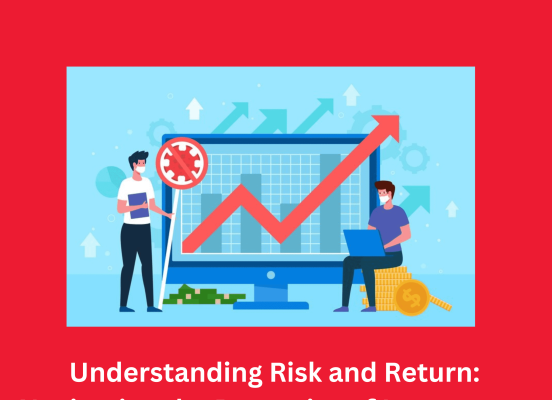
Understanding Risk and Return: Navigating the Dynamics of Investment
- By admin --
- Thursday, 14 Mar, 2024
Investing inherently involves a trade-off between risk and return. The potential for higher returns typically comes with increased risk exposure. Understanding this relationship is fundamental to making informed investment decisions. In this comprehensive guide, we'll explore the intricate dynamics between risk and return in investments, and delve into strategies for effectively assessing and managing risk.
The Relationship Between Risk and Return
Risk and return are intertwined in investment theory, with the general principle being that higher potential returns are associated with higher levels of risk. This relationship manifests in various ways:
-
Risk: Risk refers to the uncertainty or variability of returns associated with an investment. It encompasses factors such as market volatility, economic conditions, company-specific risks, and geopolitical events. Different types of investments carry different levels of risk. For example, stocks tend to be more volatile than bonds, while alternative investments like cryptocurrencies may exhibit even higher levels of volatility.
-
Return: Return, on the other hand, represents the gain or loss generated from an investment over a specific period. It includes income generated from dividends, interest payments, and capital appreciation. Generally, investors seek higher returns to compensate for taking on additional risk.
Assessing Risk
Assessing risk involves evaluating various factors that could affect the performance of an investment. Some key considerations include:
-
Volatility: Volatility measures the degree of fluctuation in the price of an investment over time. Higher volatility implies greater uncertainty and risk.
-
Market Risk: Market risk, also known as systematic risk, refers to the risk of losses due to broader market movements. Factors such as economic conditions, interest rates, and geopolitical events can impact market risk.
-
Company-Specific Risk: Company-specific risk, also known as unsystematic risk, arises from factors specific to a particular company, such as management issues, competitive pressures, or regulatory changes.
-
Liquidity Risk: Liquidity risk pertains to the ease with which an investment can be bought or sold without significantly affecting its price. Investments with low liquidity may be more challenging to sell quickly, particularly during periods of market stress.
Managing Risk Effectively
While it's impossible to eliminate risk entirely, investors can employ various strategies to manage and mitigate risk:
-
Diversification: Diversification involves spreading investment capital across different asset classes, industries, and geographic regions. By diversifying your portfolio, you can reduce the impact of any single investment's poor performance on your overall portfolio.
-
Asset Allocation: Asset allocation involves determining the optimal mix of asset classes (e.g., stocks, bonds, cash, real estate) based on your investment goals, risk tolerance, and time horizon. A well-balanced asset allocation strategy can help mitigate risk while maximizing returns.
-
Risk Tolerance Assessment: Understanding your risk tolerance is crucial in determining an appropriate investment strategy. Assessing your willingness and ability to endure fluctuations in the value of your investments can help align your portfolio with your risk preferences.
-
Risk Management Tools: Utilizing risk management tools such as stop-loss orders, options, and hedging strategies can help limit potential losses in adverse market conditions.
-
Regular Monitoring and Rebalancing: Continuously monitoring your investment portfolio and rebalancing it as needed can help maintain your desired risk-return profile. Rebalancing involves periodically adjusting your asset allocation to reflect changes in market conditions or your investment objectives.
Conclusion
In conclusion, understanding the relationship between risk and return is essential for successful investing. By recognizing the inherent trade-off between risk and potential reward, investors can make informed decisions and construct portfolios that align with their financial goals and risk tolerance. Employing strategies such as diversification, asset allocation, and risk management can help mitigate risk while maximizing returns over the long term. Remember that risk is an inherent part of investing, but by managing it effectively, you can navigate the complexities of the financial markets with confidence.





